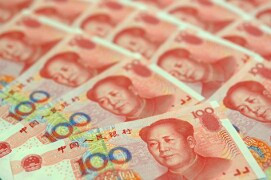The Chinese yuan is strengthening midweek as foreign exchange markets are taking a break from combing through data. But investors and officials are weighing decisions that may or may not boost national growth, including in the rural areas of the worldâs second-largest economy.
On Tuesday, Beijing announced that it will release intensive reforms of Chinaâs agriculture sector to advance its rural economy as part of efforts to offset trade challenges, increase growth, improve income levels, and enhance living standards in its countryside.
The State Council penned a âNo. 1 documentâ that was published by the state-run news agency Xinhua:
Under the complicated situation of increasing downward pressure on the economy and profound changes in the external environment, it is of special importance to do a good job in agriculture and rural areas.
Located in the report is an initiative to spur domestic soybean production. This continues on last yearâs plan to bolster domestic soybean output over a five-year period that would help the worldâs biggest soybean consumer to no longer depend on foreign markets, including the US.
As the economy faces additional pressure from global trade tensions, resulting in a significant slowdown unseen since 19990, the government believes that more tax cuts are necessary.
Vice Premier Han Zheng told the State Administration of Taxation that Beijing promises to slash taxes even further after reducing 1.3 trillion yuan ($193 billion) in taxes and fees in 2018.
Real estate, a considerable sector of the Chinese economy, is still seeing red. Total housing area sold year-on-year fell in January 2019.
Meanwhile, Morgan Stanley said in a research note that China is going to require additional foreign money due to its trade surplus drying up. In 2019, the current account shortfall is estimated to be 0.3% of its gross domestic product (GDP), which could slip to 0.6% next year. The last time China maintained a current account deficit was in 1993.
Experts are blaming lower goods exports, decreasing national savings rates, and an aging population for the deficit.
The USD/CNY currency pair tumbled 0.56% to 6.7207, from an opening of 6.7585, at 17:24 GMT on Wednesday. The EUR/CNY dropped 0.31% to 7.6404, from an opening of 7.6638.
If you have any questions, comments or opinions regarding the Chinese Yuan,
feel free to post them using the commentary form below.
